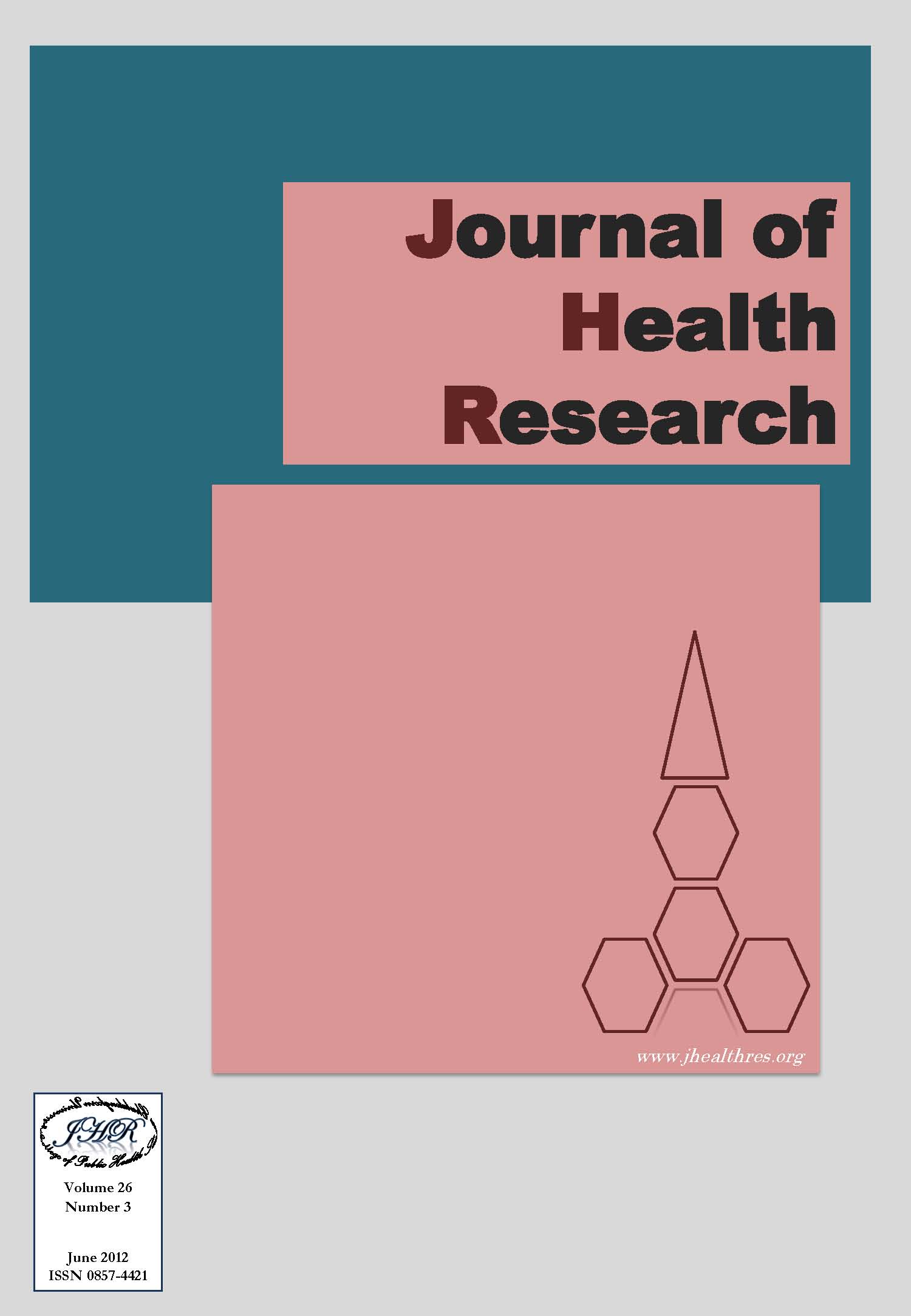Situational Analysis of Adolescent Attempted Suicide in Chaiprakarn District, Chiang Mai Province, Thailand
Keywords:
Situational Analysis, Adolescent, Attempted Suicide, ThailandAbstract
The study was conducted from May to Aug 2011. Medical records of all adolescent suicide cases of Chaiprakarn district (2006 - 2010) were reviewed, total 23 adolescent who attempted suicide cases participated in the study and answered a questionnaire on adolescents and parents’ socio-demographic and behavioral factors, mental health history, depression evaluation with 9 questions and suicide evaluation test with 8 questions, licensed SPSS program version 17 was used to calculate descriptive analysis and Chi-Square test at significant level of 95% (p < 0.05). The study has revealed the Chaiprakarn district prevalence of 13.3 adolescent attempted and committed suicide (2006 - 2010), which is approximately close to the adulthood suicide rate of Chiang Mai province 13.7 and Chaiprakarn district 14.9 in 2009. Although the suicide rate is lower than the world rate of 16.0, but the suicide rate of 13.3 is higher than the Thai national rate and recommended rate of 5.96 and 6.3 per 100,000 people respectively. The age distribution ranges 12 to 19 years (mean 15.74, SD 1.98) with slight female predominance (56.5%). All adolescents are Buddhist and most go to temple or church as a practice of religion (65.2%). Significant difference between independent variables and adolescent intention to attempt suicide are non practice of religion of adolescents (Chi–Square15.836, p-value 0.015) and non practice of religion of mothers (Chi–Square 23.000, p-value 0.001), physically abused behavior to girlfriend / boyfriend (Chi–Square 42.475, p-value 0.001), alcohol use (Chi–Square 10.000, p-value 0.019), Depression has no significant difference with an adolescent intention to attempt suicide. Certain mental health problems including depression and suicide might be underreported by the participants because of unsafe or non confidential research environment or psychiatric defense mechanism of denial, since the respondants have already attempted suicide in the past. Most of the study results are congruent with the conceptual framework of the study.







